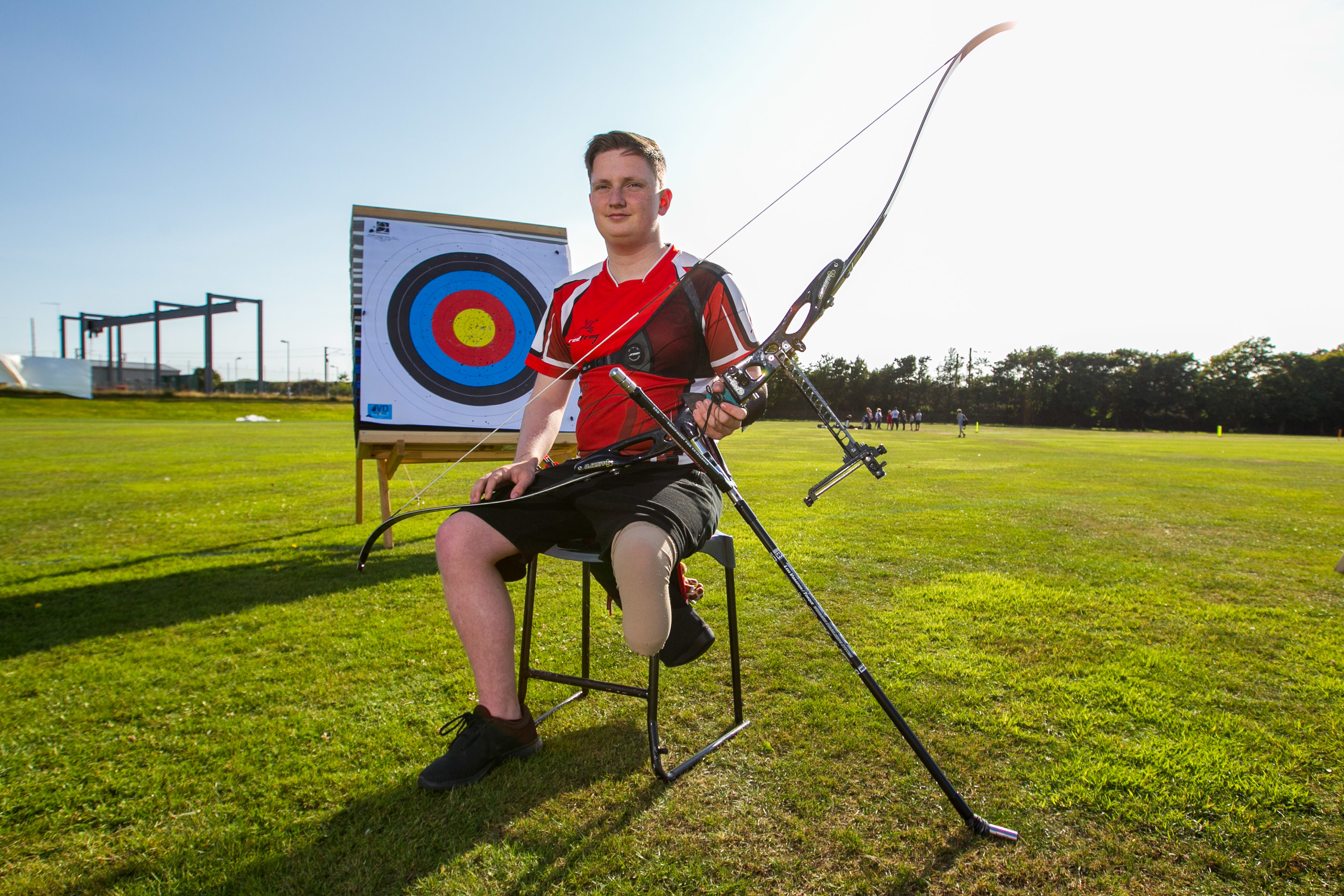
A teen has revealed how he begged doctors to amputate his leg for three years.
Now five weeks after finally persuading them to carry out the surgery, Cameron Radigan is looking forward to taking the first steps to a new life.
His left leg had been seriously damaged by lifesaving bone cancer treatment.
The 16-year-old was only two when doctors diagnosed a tumour and he spent months in hospital. But the radiotherapy damaged his leg so much that by the age of eight he struggled to walk. By 11 he needed crutches and at the age of 13 Cameron, from Galston, Ayrshire, used a wheelchair to get about.
“I really needed to walk and from the age of 13 I was asking doctors to amputate my left leg from below the knee,” he said.
“Using a prosthetic leg was my only hope of ever walking again. I was often down because I felt left out,” he said. “All my friends could walk and while they were very helpful in getting me about,
I was different and felt it.
“I knew my only hope of ever walking again was to lose my left leg from the knee down.
“So I asked my doctors at the Royal Hospital for Children in Glasgow to amputate it.”
It was a bold move from a teenager of 13, and not one doctors were going to grant lightly.
They told Cameron to wait until he was older. But the challenges of getting about in a wheelchair were endless.
Pavements with high kerbs presented a constant challenge while lips on doorways make for tricky manoeuvres.
Cameron’s dad, Richard, 43, said: “It is so easy for a wheelchair to tip up and throw someone out. That always at the back of our mind. Shopping centres have doors that opened outwards and make it difficult for people in wheelchairs to use.
“We had huge confidence in Cameron but are aware that after being through so much he was still facing challenges. He is fiercely independent and we could see how not being able to walk was affecting him.”
By the age of 16, Cameron was thriving at school, Loudoun Academy in Galston, and following his goal to study engineering. A college course in engineering dovetails with his school week.
He has gained sponsorship from a local engineering company, Egger.
His love of sport has seen him become an accomplished archer and he competes at a national level, with sponsorship from Red Frog, an archery shop.
“Cameron is so determined and independent,” his mum, Karen, said.
“He grew up undergoing treatment for cancer and its after effects. He never wants any form of pity or sympathy but instead likes to get the best out of life. We are immensely proud of him.”
Hospital appointments continued to check his cancer had not returned and exploring ways of overcoming nerve pain.
They were always another opportunity for him to persuade doctors to carry out an amputation.
But the doctors told Cameron to be patient and consider how irreversible and radical surgery would be.
Desperate to help him achieve the independence he so desperately wanted, Richard and Karen organised a meeting of his hospital doctors, nurses, physiotherapists, head teacher and family.
“We felt his pleas for an amputation should be discussed and a decision made,” said Richard.
“It needed to involve the major people in his life. We helped organise a meeting of all his doctors, nurses, physiotherapists, head teacher and of course, family.
“He also had to undergo psychological tests to establish it was right for him.”
The decision to amputate Cameron’s limb from the knee down was made earlier this year. Cameron was delighted.
“It’s what I wanted more than three years ago,” Cameron said.
The surgery was carried out almost five weeks ago.
Within moments of waking up from the anaesthetic he was laughing and joking with the nurses.
Physiotherapy began within days followed with first fittings for a prosthetic leg.
Just 11 days after surgery his surgeon gave him the go-ahead to represent Scotland in the
Junior National Outdoor Archery Championships at Lilleshall in Shropshire.
He emerged ranked 23rd nationally in the under-18s. He is third in Scotland.
“I don’t see myself as brave nor do I want anyone else to,” said Cameron. “I have just done what was vital to live my life to the full.
“I am an archer. I am not a cancer survivor. I am not an amputee. These are things that happened to me but do not define me.
“We all deal with challenges every day to the best of our ability and we carry on.
“If we manage to find time to train for a sport we love with our friends is that not the definition of dedication?”
Cameron is now ranked third in the under-18s for archery in Scotland and 23rd nationally after his sterling performance at the games.
He has also been chosen to go through to phase two of the Paralympic selection process…in cycling and canoeing.
“If you want something in life, go for it,” he said.
Clinical psychologist, Dr Simon Stuart, said: “It’s wonderful and inspirational for people to make radical changes and go forward to lead an improved life.
“In my experience, if someone is well informed of all the potential outcomes, making informed decisions can be hugely beneficial.”

Enjoy the convenience of having The Sunday Post delivered as a digital ePaper straight to your smartphone, tablet or computer.
Subscribe for only £5.49 a month and enjoy all the benefits of the printed paper as a digital replica.
Subscribe